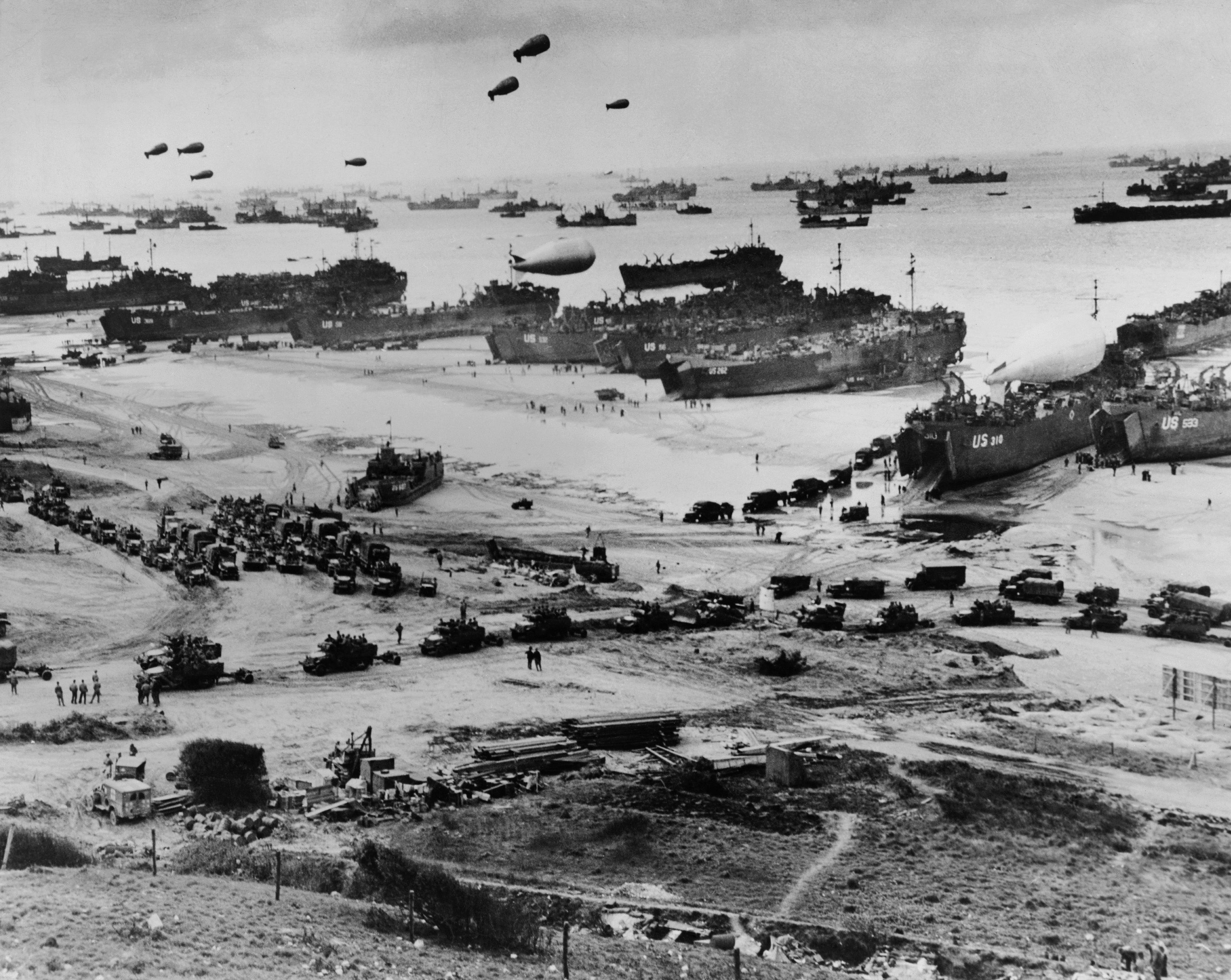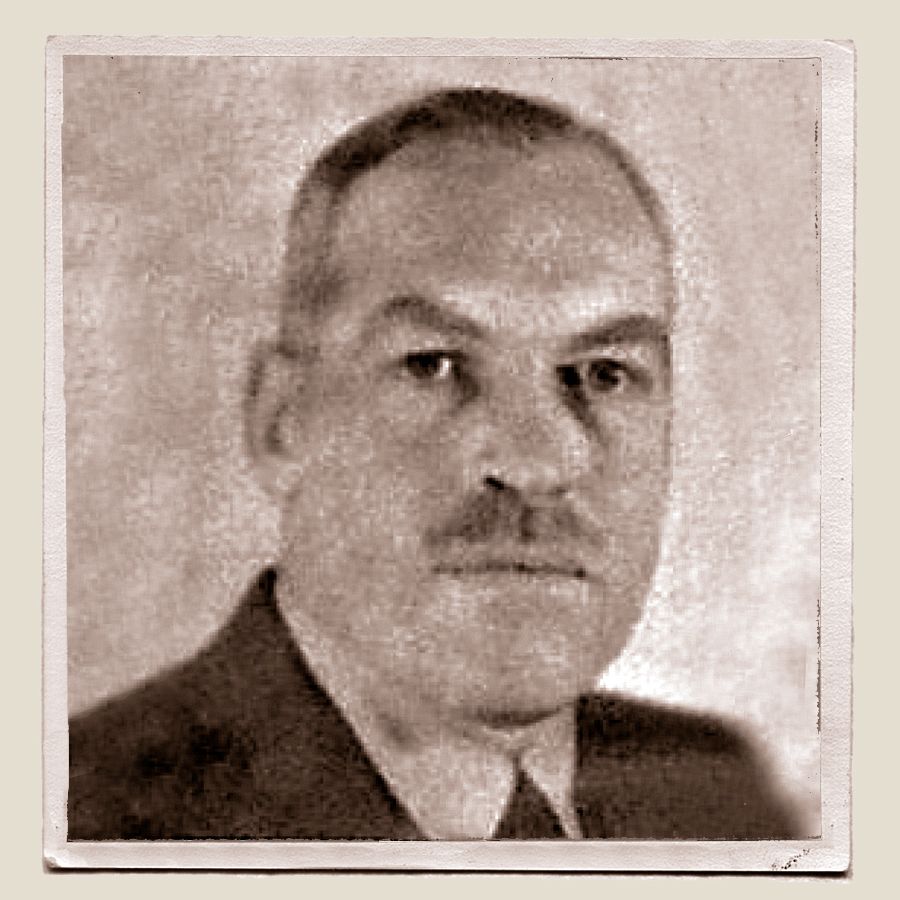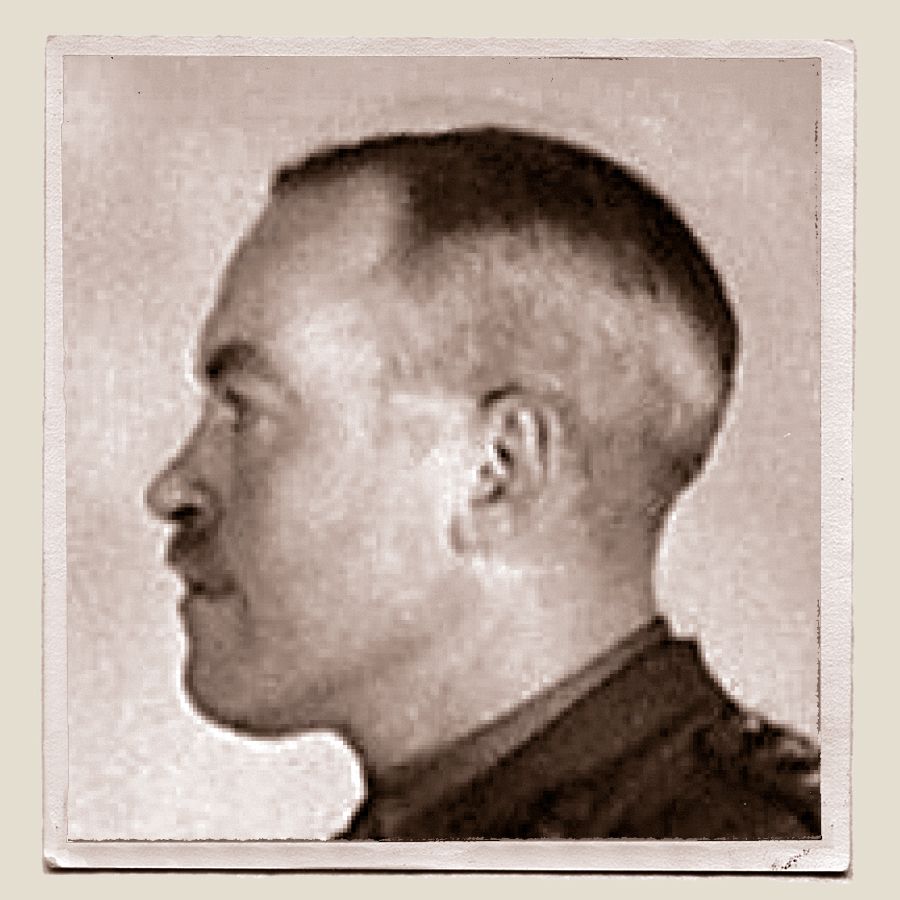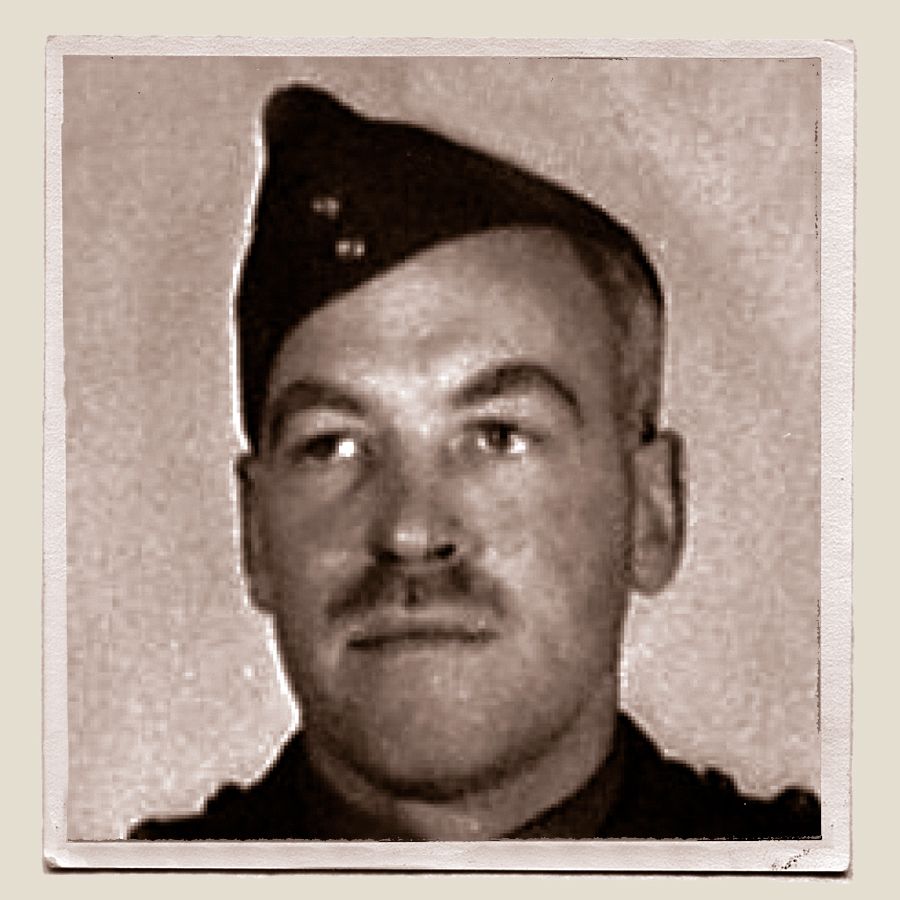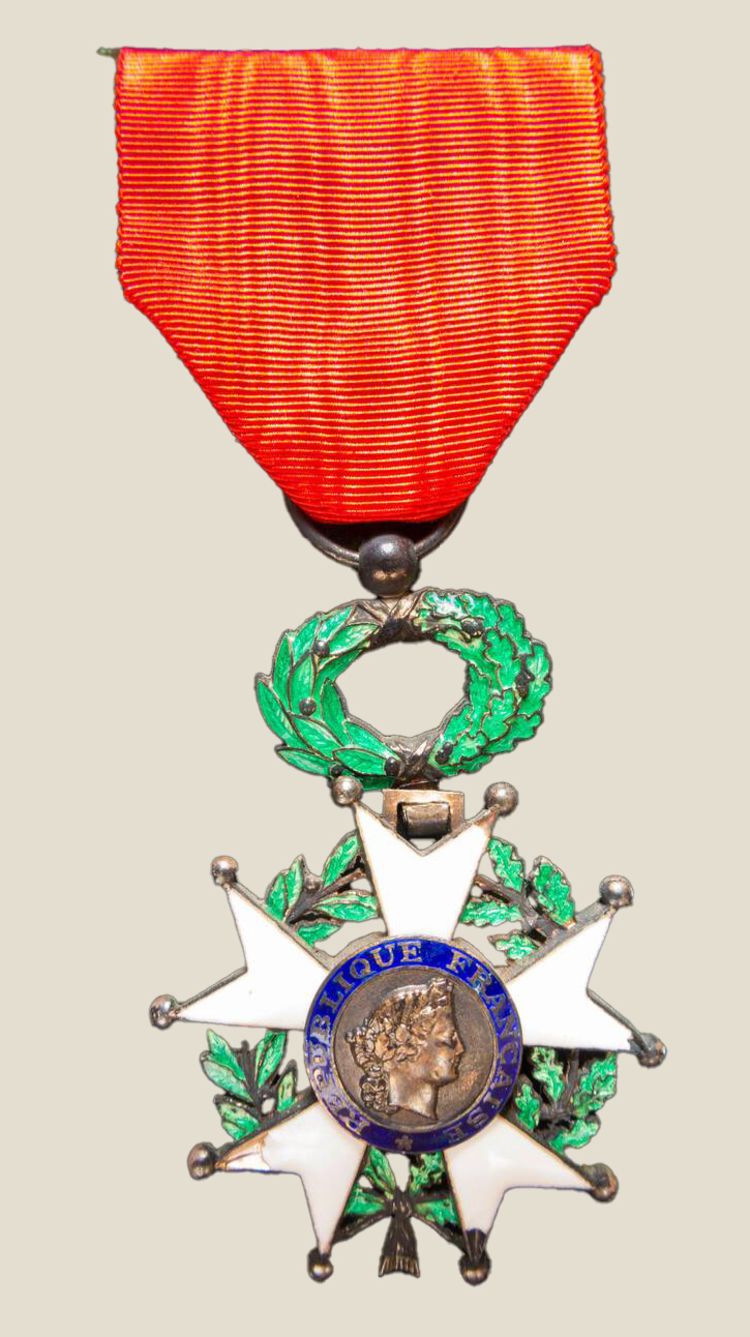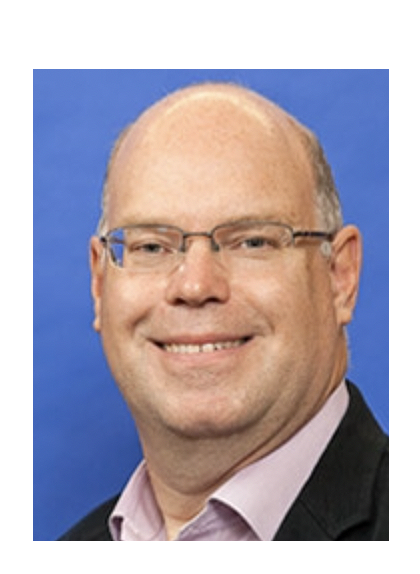SECRET
AGENT CA
The Special Operations Executive was formed to cause disruption behind enemy lines during WWII. Nicknamed the Ministry of Ungentlemanly Warfare, and with economic sabotage part of its remit, its ranks contained many chartered accountants – including Captain Alastair Kerr Hay CA, whose story is told here on the 80th anniversary of his death
WORDS: Ian Piper
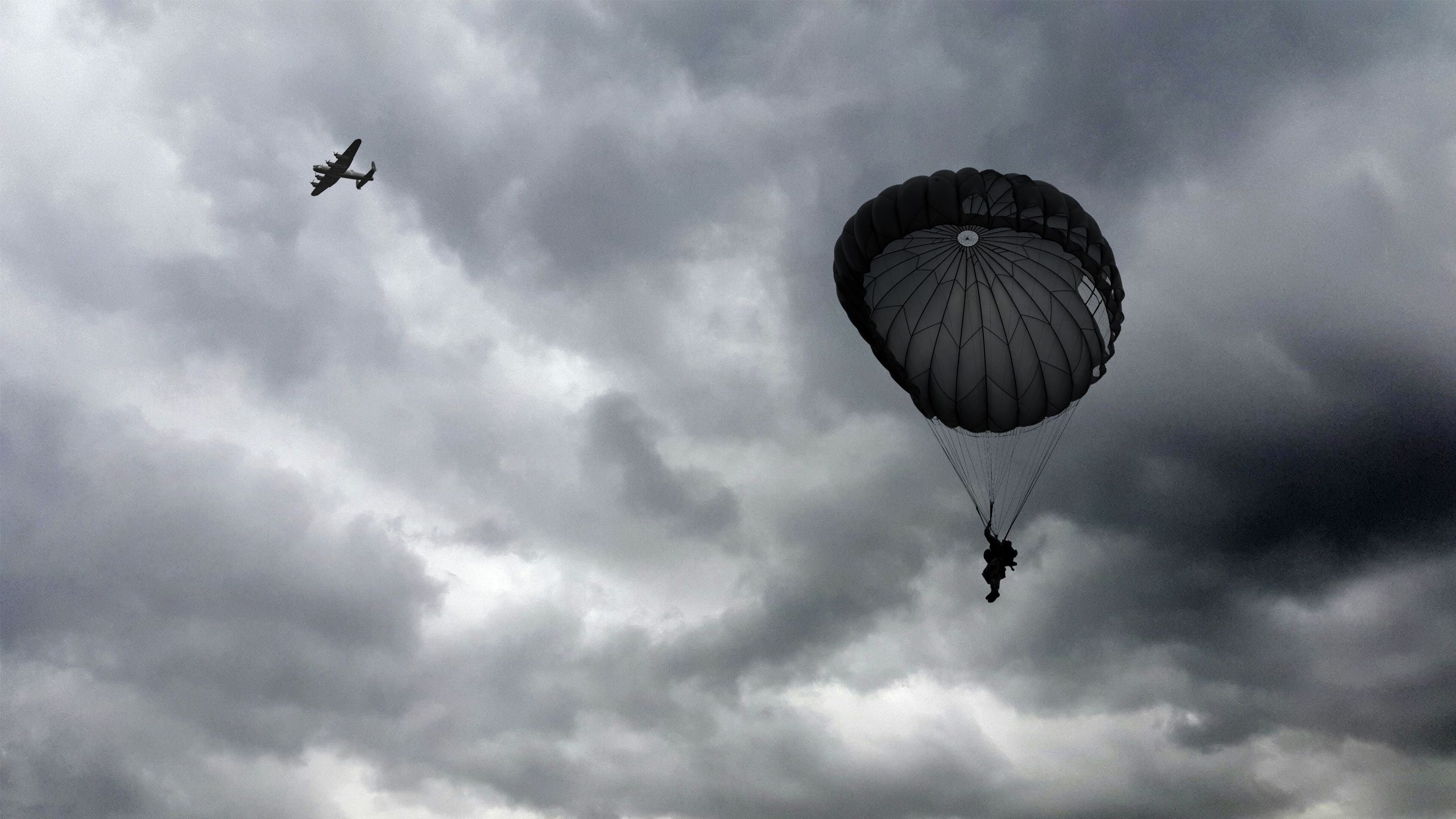

The D-Day landings in Normandy, France on 6 June 1944 were a pivotal moment in the history of the Second World War. By the end of that “longest day”, all five landing beaches (Sword, Juno, Gold, Omaha and Utah, as they were codenamed) had been secured, albeit tentatively, by Allied forces.
One of the key tasks following D-Day was to slow the progress of German tanks and other reinforcements being sent to Normandy, giving the Allied forces time to join up the beaches, enabling troops to strengthen the beachhead and push inland. The crucial task of delay was, in large part, undertaken by French Resistance groups throughout the whole of France (including the south, where the Germans had significant Panzer divisions stationed). The men and women of the Resistance were supported by agents from the Special Operations Executive (SOE), many of whom had parachuted into France in the months leading up to D-Day to organise the delaying attacks.
Omaha beach during the Normandy landings
Omaha beach during the Normandy landings
Established in strict secrecy in July 1940, following the defeat of British and French forces at Dunkirk, SOE was instructed “to coordinate all action, by way of subversion and sabotage, against the enemy overseas”. The hope of its main sponsor, new British Prime Minister, Winston Churchill, was that it would – in the words of Hugh Dalton, Minister of Economic Warfare – “set Europe ablaze”.
SOE spent over £21m between 1940 and 1945 from the Secret Vote (a fund for British intelligence). By 1944 it had grown into a complex, multi-faceted, multinational organisation, employing more than 10,000 staff at home and a further 5,000 overseas, operating in western and eastern Europe, south-east Asia, Africa and the Americas.
The organisation was part of the new Ministry of Economic Warfare, and recruited heavily from the professions, including around 40 chartered accountants, at least five of whom came through ICAS. SOE was new and unorthodox, offering a radically different approach to the conduct of warfare.
It was into this novel organisational context that the chartered accountants were recruited. Most were there to assist with financial warfare objectives, including black-market foreign currency transactions, but a small number served as agents in the field. One of those was Captain Alastair Kerr Hay CA (pictured), who was recruited from the Royal Regiment of Artillery in December 1943.
Hay was parachuted into southern France from north Africa, on 10 April 1944, under the name of Alexandre le Haye, a demobilised French infantryman working in Marseille as an “expert comptable” (or chartered accountant). It was common practice for an SOE agent’s cover story to have links to their real life, as this added authenticity.
Hay’s real role was to be the British representative of the first Allied mission into south-east France, and his task was to strengthen and organise the Maquis (Resistance fighters) in seven departments across the region – an extremely dangerous role requiring considerable courage, organisational ability and diplomacy. He was given the Resistance code name Edgar.
Sadly, on 13 June 1944, two months after landing, Captain Hay was killed in action. For the 80th anniversary of his death, we are telling his courageous story, using information obtained from a variety of archival sources.
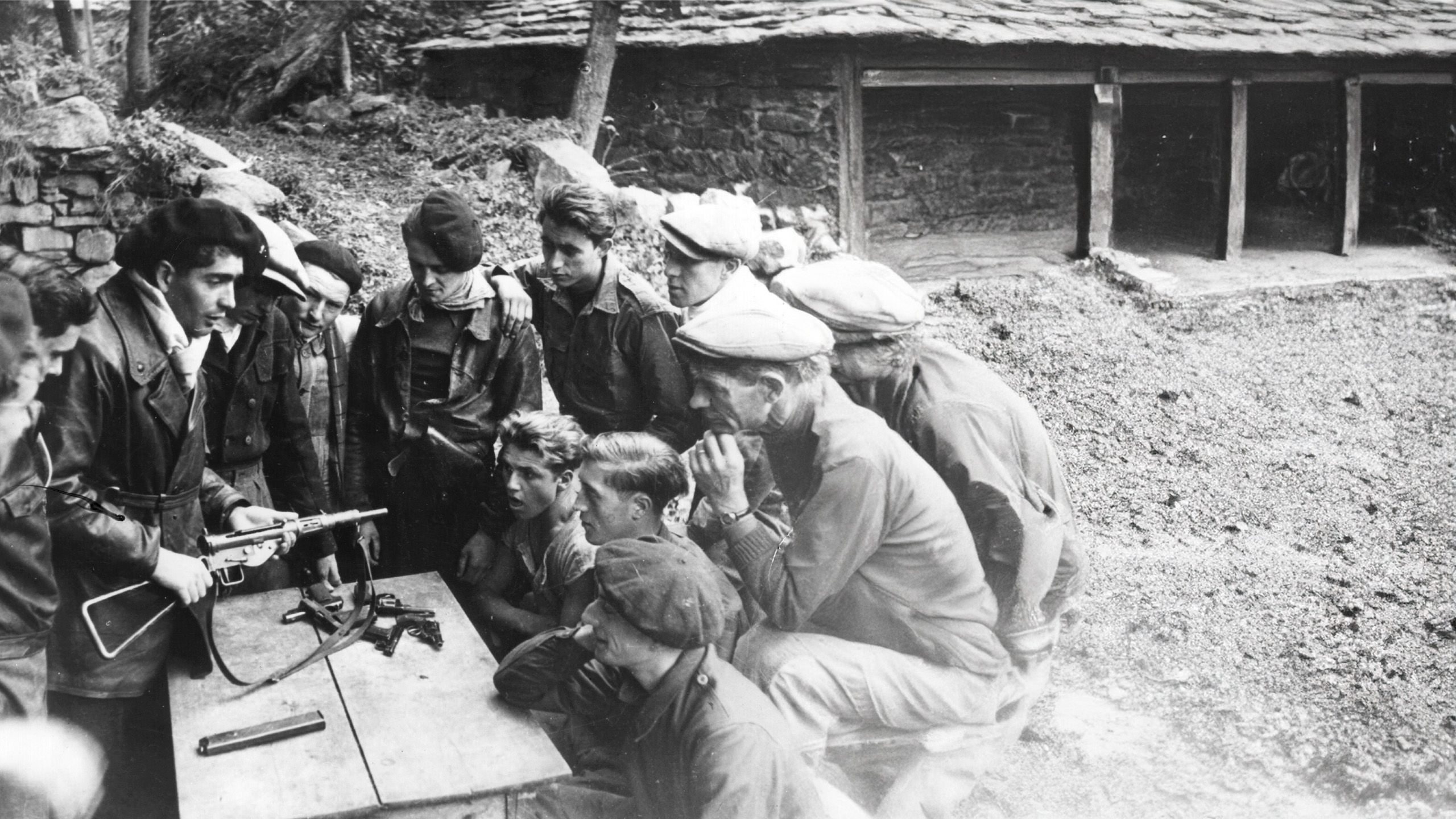
Hay was parachuted into southern France from north Africa, on 10 April 1944, under the name of Alexandre le Haye, a demobilised French infantryman working in Marseille as an “expert comptable” (or chartered accountant). It was common practice for an SOE agent’s cover story to have links to their real life, as this added authenticity.
Hay’s real role was to be the British representative of the first Allied mission into south-east France, and his task was to strengthen and organise the Maquis (Resistance fighters) in seven departments across the region – an extremely dangerous role requiring considerable courage, organisational ability and diplomacy. He was given the Resistance code name Edgar.
Sadly, on 13 June 1944, two months after landing, Captain Hay was killed in action. For the 80th anniversary of his death, we are telling his courageous story, using information obtained from a variety of archival sources.

Hay’s SOE personnel file, held at the National Archives in Kew, contains his application form and interview notes. It states that between 1936 and 1939 he spent six weeks a year auditing company accounts in Rouen, France and claimed to be fluent in French. It was this experience that, in 1943, had brought him to the attention of SOE.
Hay’s death was mentioned in dispatches in the London Gazette, on 21 June 1945: “On 13 June 1944 Captain Hay took part in the liberation of the Vallee de l’Ubaye and when the Germans counter attacked, Captain Hay went forward under very heavy fire and attacked a German armoured car with a PIAT [bazooka] at fifty yards range. He put three shells into the car and knocked it out, he himself was wounded and subsequently died.”
Captain Hay’s actions saved his Barcelonnette HQ from attack by the Germans. He was carried back there by another SOE agent, codenamed “Victor”, who was later shot at the hands of the Gestapo. Victor confirmed Hay’s death by telegram from the field on 24 June 1944, stating that he “regretted to announce the glorious death of Edgar, who was a priceless collaborator and charming comrade”. The French wanted to award Hay the Legion of Merit, Chevalier (pictured), but this was not possible as, at the time, British servicemen were not permitted to receive posthumous awards other than the Victoria Cross.
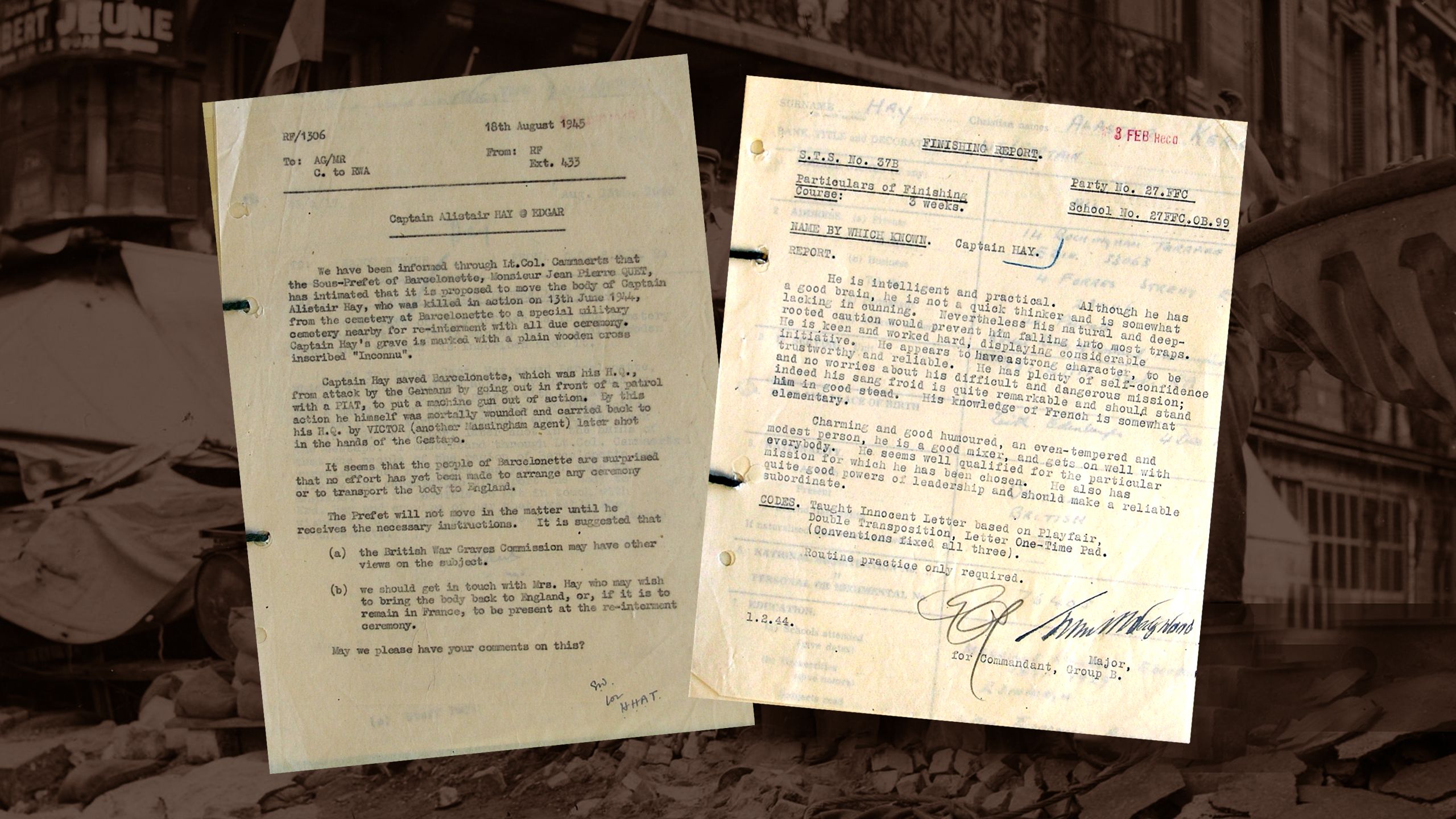
In fitting with his civilian cover story, Hay was initially buried in the Barcelonnette village cemetery as “Inconnu” (“unknown”), but in 1945 was reinterned at the Mazargues War Cemetery, Marseilles (pictured).
Hay’s SOE training record describes him as, “intelligent and practical. Although he has a good brain, he is not a quick thinker and is somewhat lacking in cunning. Nevertheless, his natural and deep-seated caution would prevent him from falling into most traps… He appears to have a strong character, to be trustworthy and reliable; indeed his sang-froid is quite remarkable… Charming and good humoured, an even tempered and modest person, he is a good mixer and gets on well with everyone.”
It is therefore no surprise that in an obituary in the Accountant, forerunner of CA magazine, Hay is described as “a man of ability and personality whose early death is a great loss to the accounting profession in Edinburgh”.
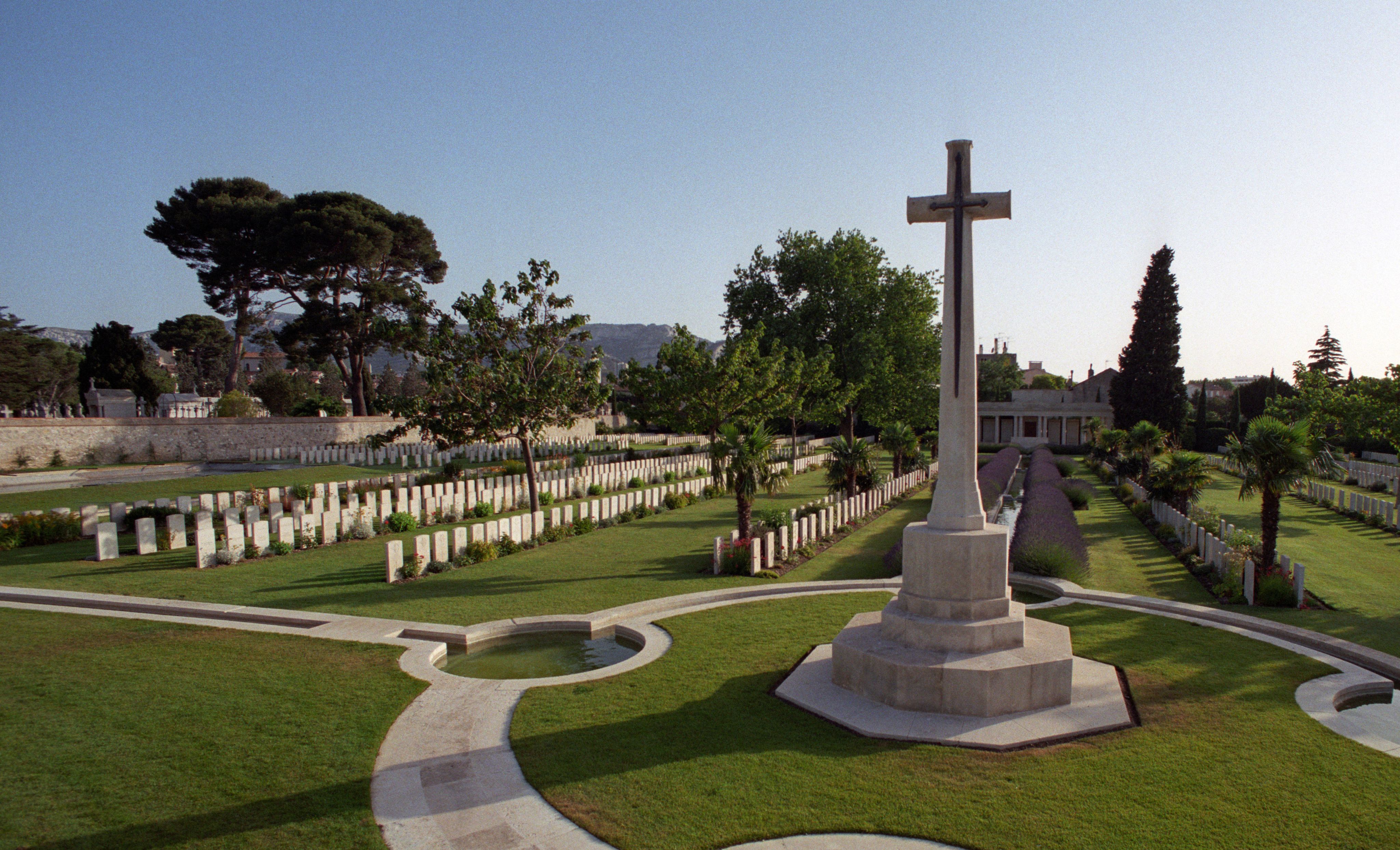
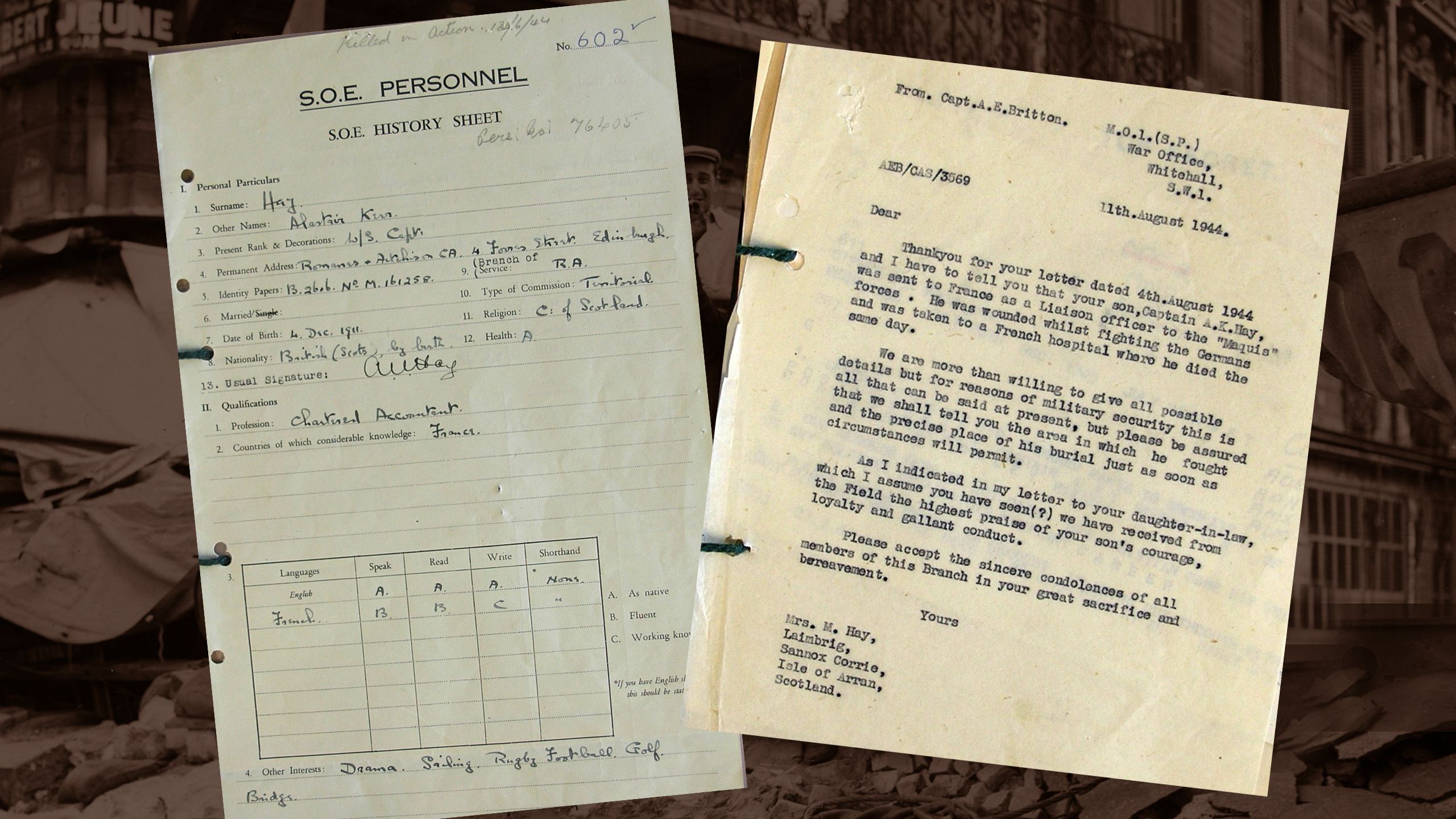
The life of Alastair Kerr Hay CA
Alastair Kerr Hay was born in Edinburgh on 4 December 1911, the son of Alexander and Mary Hay. He was educated at the Edinburgh Institution from 1917 to 1929. In his final academic year, he was prefect, club prizeman and played in the first XV rugby team, being awarded a cap. He was a member of the Cadet Corps 1923–29.
On leaving school Hay remained in Edinburgh and, in December 1929, trained with Dingwall, Peden & Henderson, CA, at 48 Queen Street, Edinburgh. The educational requirements for an apprentice chartered accountant were high, as were the financial commitments. Hay’s knowledge of law, economics and accountancy would have assisted his career development.
His parents would have had to pay the training firm an upfront fee of up to £450 for Hay’s apprenticeship, and he would have remained unpaid until he passed his final exams and qualified. This he did in July 1935, being admitted as a member of the Society of Accountants in Edinburgh. After a period as an assistant, he was made a partner of Romanes & Aitchison CA, Edinburgh. He married Margaret (Peggy) Douglas and they lived at 14 Buckingham Terrace, Edinburgh.
Hay was granted a Territorial Army commission in the Royal Scots in 1938 and promoted to War Substantive Captain in 1941. Due to a rugby injury, he found himself in charge of the regiment’s searchlight batteries in the Scottish Borders. This appointment did not suit him at all and so, wanting to “do his bit”, Hay was interviewed by Flight Lieutenant Yeo-Thomas, a recruiting officer for the SOE, in December 1943. It was to prove a fateful meeting.
“One of the key tasks following D-Day was to slow the progress of German reinforcements, giving the Allied forces time to join up the beaches and push inland”
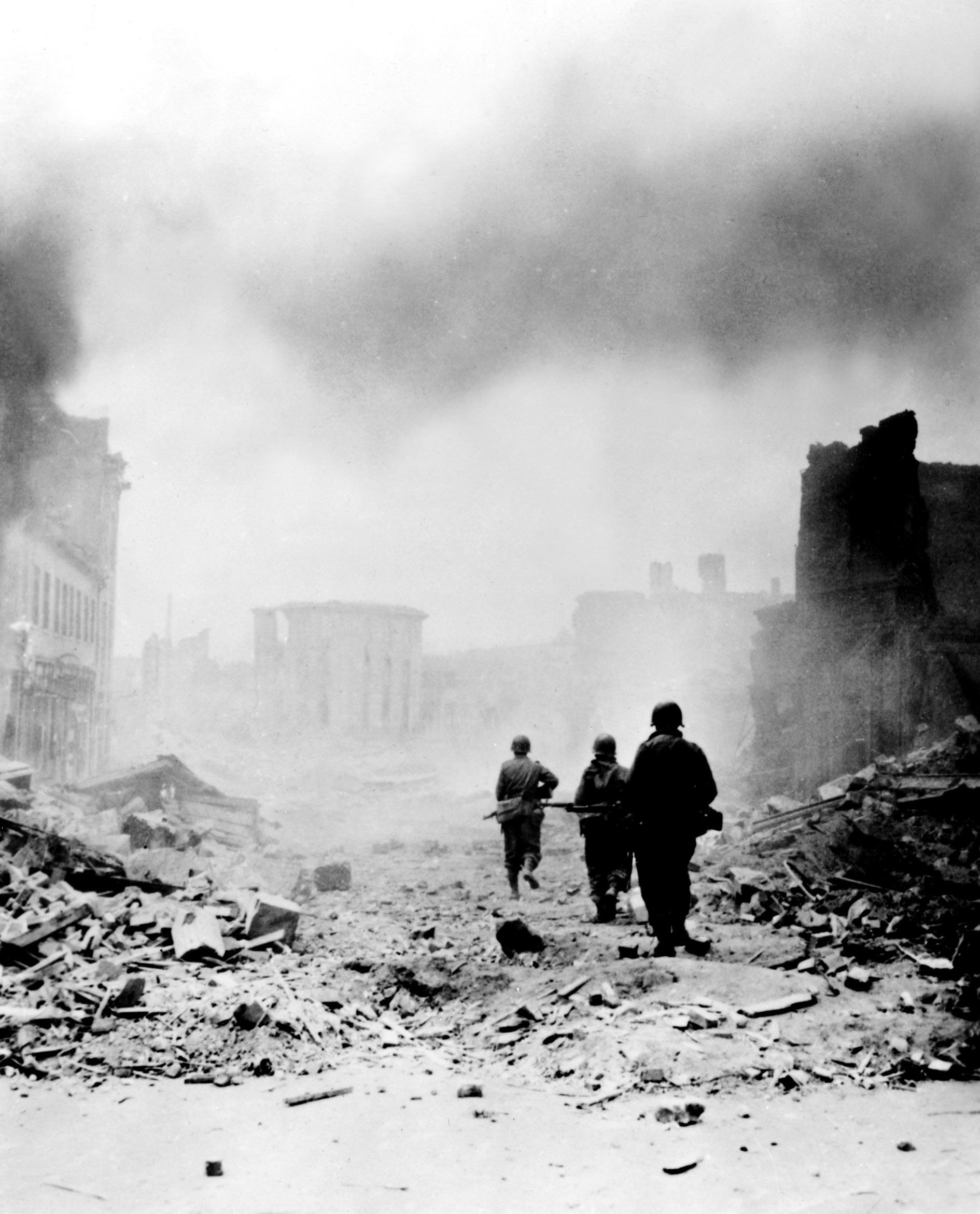
Four more SOE CAs
Alexander Anderson CA: Trained with Barstow and Millar, Edinburgh, qualified in 1931 (Edinburgh Society) and then worked for Whinney, Smith and Whinney London, and as Finance Director at Buser and Co, London. Wing Commander RAF. Director/ Accountant of all SOE’s operations in China. Finance lead for Operation Remorse, obtaining millions of pounds’ worth of Chinese National Currency via the black market for British military needs in China.
Charles Christie Webster CA: Trained at Wardhaugh & McVean, Glasgow. Qualified 1936 (Glasgow), then worked as General Manager for the Borneo Company in its Singapore Office, responsible for Malaya. Was employed by SOE as a Touring Accountant in its India mission.
Cecil Dudley Rankin CA: Trained with Richardson and Lawson, qualified in 1934 (Glasgow) then worked for McLintock and Son CA, London, before becoming a partner in Rankin and Sons, Glasgow, in 1939. He was Chief Accountant in SOE Force 133 (Mediterranean) from 1942–45, responsible for auditing and preparation of accounts for Egypt, Palestine, Syria, Iraq, Iran and Turkey.
William Giles Bisset CA: Trained with Richard Brown & Co, St Andrew Square Edinburgh. Qualified 1939 (Edinburgh). Joined SOE 1944 as a conducting officer in Albania.
Four more SOE CAs
Alexander Anderson CA: Trained with Barstow and Millar, Edinburgh, qualified in 1931 (Edinburgh Society) and then worked for Whinney, Smith and Whinney London, and as Finance Director at Buser and Co, London. Wing Commander RAF. Director/ Accountant of all SOE’s operations in China. Finance lead for Operation Remorse, obtaining millions of pounds’ worth of Chinese National Currency via the black market for British military needs in China.
Charles Christie Webster CA: Trained at Wardhaugh & McVean, Glasgow. Qualified 1936 (Glasgow), then worked as General Manager for the Borneo Company in its Singapore Office, responsible for Malaya. Was employed by SOE as a Touring Accountant in its India mission.
Cecil Dudley Rankin CA: Trained with Richardson and Lawson, qualified in 1934 (Glasgow) then worked for McLintock and Son CA, London, before becoming a partner in Rankin and Sons, Glasgow, in 1939. He was Chief Accountant in SOE Force 133 (Mediterranean) from 1942–45, responsible for auditing and preparation of accounts for Egypt, Palestine, Syria, Iraq, Iran and Turkey.
William Giles Bisset CA: Trained with Richard Brown & Co, St Andrew Square Edinburgh. Qualified 1939 (Edinburgh). Joined SOE 1944 as a conducting officer in Albania.
ABOUT THE AUTHOR
Ian Piper FCPFA
I am a qualified CIPFA accountant, with 35 years’ experience working in the NHS and the charity sector. I am currently a senior teaching fellow and part-time PhD student at the University of Portsmouth. My PhD, Accountants at War, focuses on the many chartered accountants who served with SOE between 1940 and 1945. I have had a prize-winning paper about John Venner, SOE’s Director of Finance, published in the December 2023 edition of the Accounting Historians’ Journal, and currently have two other papers under review at academic journals. I believe it is important that we tell the story of these CAs who put the national interest first at a time of global conflict, as there are many important lessons to be learnt
ABOUT THE AUTHOR
Ian Piper FCPFA
I am a qualified CIPFA accountant, with 35 years’ experience working in the NHS and the charity sector. I am currently a senior teaching fellow and part-time PhD student at the University of Portsmouth. My PhD, Accountants at War, focuses on the many chartered accountants who served with SOE between 1940 and 1945. I have had a prize-winning paper about John Venner, SOE’s Director of Finance, published in the December 2023 edition of the Accounting Historians’ Journal, and currently have two other papers under review at academic journals. I believe it is important that we tell the story of these CAs who put the national interest first at a time of global conflict, as there are many important lessons to be learnt



